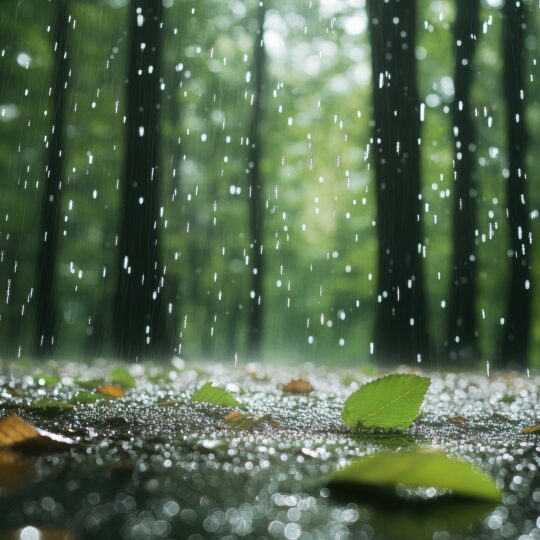Gauging Rain Water
How Much is Too Little & Too Much
Posted
August 21, 2025

Rain is a natural water source that can help you take care of outdoor plants. However, too much and/or too little can impact healthy growth. Learn how properly gauging rain water can help you and your garden.
Gauging Rain Water
Generally, one inch of rain per week is considered sufficient for most plants. This should wet the soil about six inches deep. However, rain is something only nature can control. Plus, temperature and plant type are also two factors that can impact sufficient watering. That’s why it’s important to properly gauge how much rain your plants are getting and adjust accordingly.
Too much rain can be detrimental, leading to root rot, fungal disease, and other problems. You can help balance a rainy season by doing the following:
- Ensure proper drainage. Aerate the soil to help improve water flow and distribution throughout the area. Add mulch and other organic materials to improve the soil and water retention. If you notice pooling or excessive runoff in your yard, focus on these areas first.
- Shelter plants, if possible. If the forecast calls for a lot of rain, consider moving potting plants under shelter or shade.
- Halt irrigation. Don’t water your plants unless the soil is completely dry. Adjust irrigation schedules when necessary.
Too little rain can cause drought stress. If the soil is bone dry, it needs water — unless it’s a plant that thrives in these conditions. Some plants are more drought-tolerant that others. If you live in this type of environment, consider planting more sun-loving, dry soil types.
Pay Attention to Your Plants
One of the best ways to tell if your plants are getting too much or too little water is to regularly monitor their condition.
- Feel the soil. If it’s dry six inches underground, it’s time to water. If it’s waterlogged, it’s getting too much.
- Look for signs of disease. Discolored leaves and fungal growth on the branches could be a sign of too much moisture.
- Notice wilting leaves? This could be a sign of both overwatering and drought. Assess the dryness of the soil for a second opinion.
Using a rain gauge can help measure the amount of rainfall you get in a day. Use this as a guide to determine whether your plants could use more or less water. Adjust water levels and schedules throughout each season to provide the optimal amount of hydration.